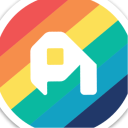How I Bootstrapped A $1.8M/Year UX Research Software
Hello! Who are you and what business did you start?
Hi everyone! I’m Lindsey Allard, originally from Boston and currently living in New Hampshire. I started PlaybookUX just over 3 years ago. Our goal was (and still is!) to help businesses quickly get feedback on their digital assets.
Back in 2018, there weren't many cost-effective all-in-one research tools for startups, SMBs, and freelancers. I wanted to make sure that any freelancer with an idea could sign up and talk to their target customer within hours. Interestingly enough, we created such a valuable product that it attracted huge brand names. Our customers range from a Fortune 500 business, like Google, to sole freelancers.
Our customers tend to be researchers, product managers, marketers, designers, and founders. However, anyone with a digital product can use our tool.
Our biggest accomplishment is that we were able to bootstrap our business as opposed to going the traditional venture capital-backed route.
At its core, PlaybookUX specializes in qualitative research. Imagine you’re software for dog owners in New York and you’re interested in testing your website. Our software allows you to recruit those...

Download the report and join our email newsletter packed with business ideas and money-making opportunities, backed by real-life case studies.

Download the report and join our email newsletter packed with business ideas and money-making opportunities, backed by real-life case studies.

Download the report and join our email newsletter packed with business ideas and money-making opportunities, backed by real-life case studies.

Download the report and join our email newsletter packed with business ideas and money-making opportunities, backed by real-life case studies.

Download the report and join our email newsletter packed with business ideas and money-making opportunities, backed by real-life case studies.

Download the report and join our email newsletter packed with business ideas and money-making opportunities, backed by real-life case studies.

Download the report and join our email newsletter packed with business ideas and money-making opportunities, backed by real-life case studies.

Download the report and join our email newsletter packed with business ideas and money-making opportunities, backed by real-life case studies.




















